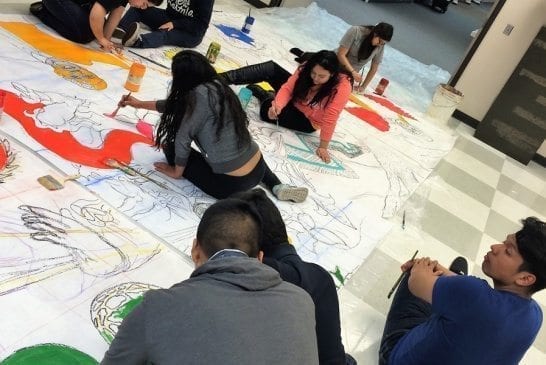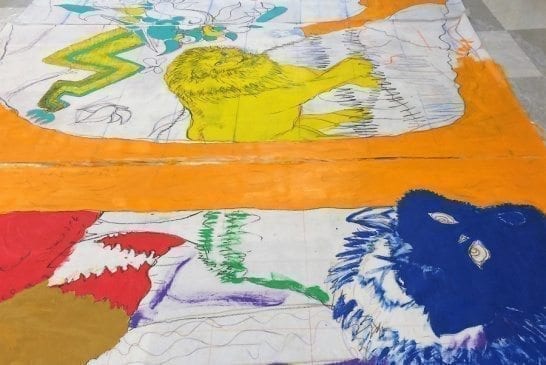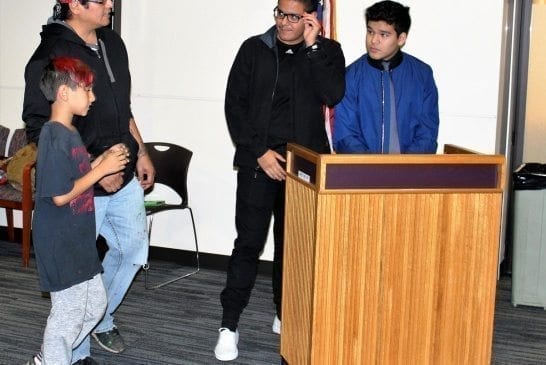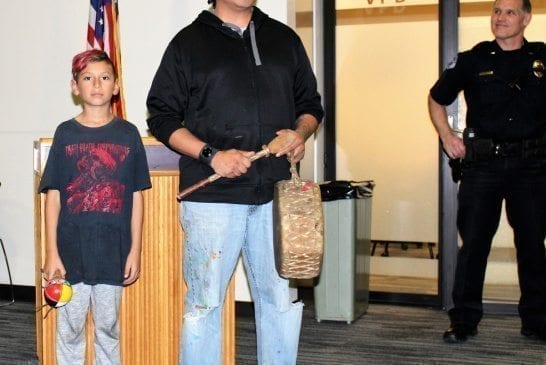VANCOUVER — The mood inside the Vancouver Police Department’s West Precinct was celebratory last Friday night, as current and former students from Fort Vancouver High School gathered with officers, media and Vancouver politicians for the unveiling of a vivid, student-painted mural that takes up an entire wall of the precinct.
“We are so proud of this mural,” said Manuel Avalos, 18, a former president of the Fort Vancouver High School’s MEChA organization and current neuroscience major at Washington State University, Vancouver. “We feel it represents us.”
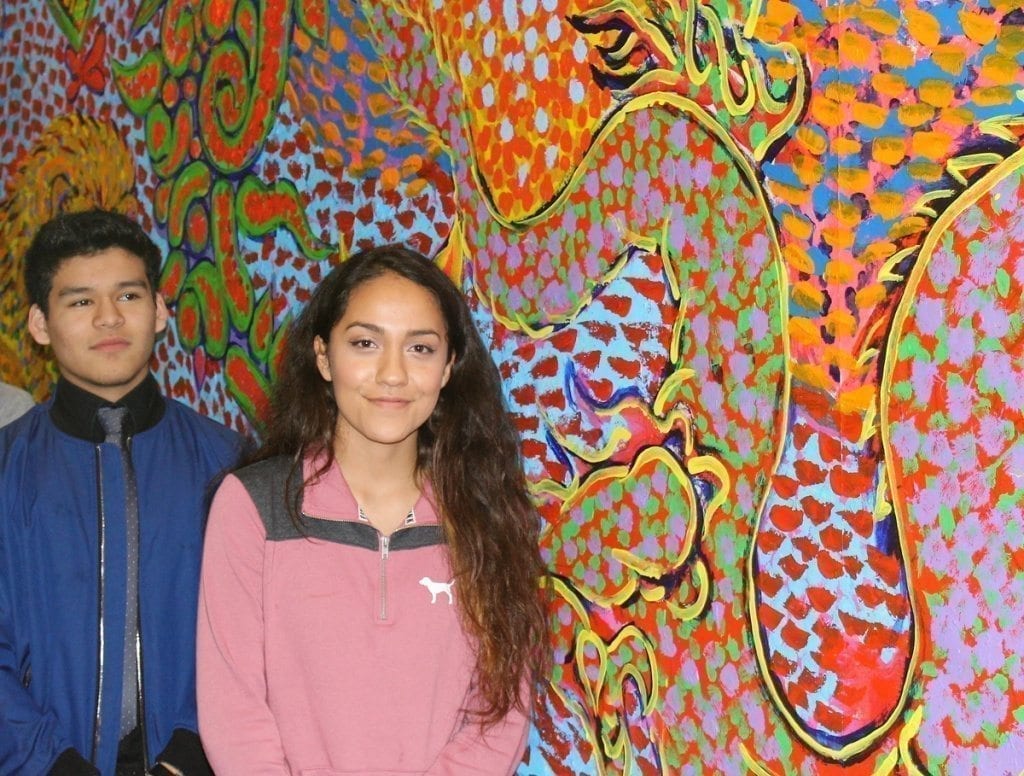
The Fort Vancouver students and Avalos are all active members of Movimiento Estudiantil Chicano de Aztlán (MEChA), a national organization that celebrates the history and culture of Chicano youth and promotes higher education and political involvement.
For the past two years, the students have worked with Portland artist Rodolfo Serna to develop the new 16-by-6-foot mural that now hangs inside the Vancouver Police Department’s West Precinct at 2800 N.E. Stapleton Road.
Punctuated by bright splashes of color, the mural features a mix of wild animals, dragons from different cultures and several social justice leaders, some of whom experienced prison first-hand — including Nelson Mandela, the South African anti-apartheid revolutionary who became his country’s first black president in 1994 after serving 27 years in prison, and Cesar Chavez, the labor leader and civil rights activist who co-founded the National Farm Workers Association with activist Dolores Huerta in 1962 and also spent time in jail, in 1970, for refusing to call off a lettuce boycott.
Before the mural’s unveiling on Fri., Dec. 2, Avalos joked that the mural was adding some much needed color to the police precinct.
“Not to knock the designers here, but there’s no color!” Avalos said, garnering chuckles from Vancouver Police Chief James McElvain and several officers at the event.
Avalos added that he hoped the cheerful mural would help brighten the officers’ moods when they saw it and bring a smile to their faces.
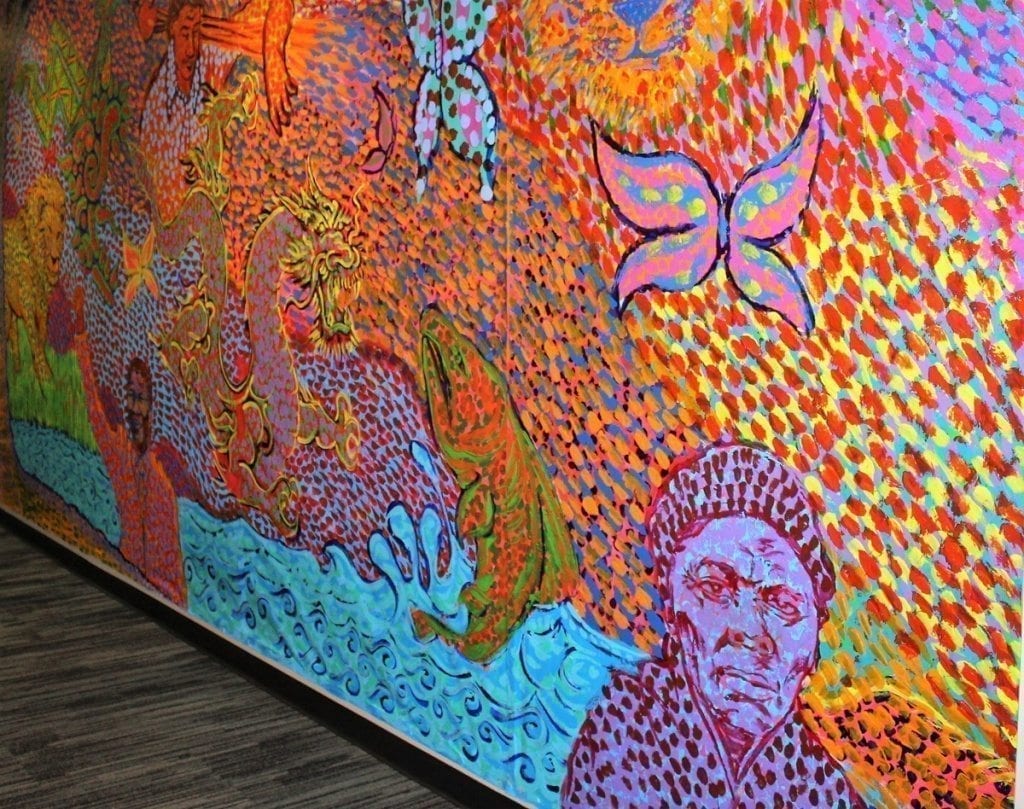
Nayeli Adame, 17, a senior at Fort Vancouver High and co-president of her school’s MEChA organization, said she felt it was “brave” of the police department to put the mural, which features social activists who often clashed with law enforcement during their own civil rights struggles, up in the West Precinct.
“There is still a lot of work to be done,” Adame said of healing relationships between police and minority groups. “But this is a start.”
Portland artist Rodolfo Serna, the muralist who worked with the students for the past two years to design, construct and paint the mural, agreed. Although he’s been working with Portland area students since 2007 on similar social justice murals, Serna said police presence and acceptance — in Portland, at least — isn’t the norm.
“A few years back, we did a mural here in Portland … and the mural itself was dedicated to students we’d lost because of street violence,” Serna, who works with at-risk minority populations at his job as a case manager for a Portland nonprofit said. “We invited the police because we thought that bringing police in could be kind of healing, but they didn’t show up. Worse than that, I was out there working on the mural one night around 11:30 and the only police officer I saw was someone who asked me if I was trying to break into the place.”
But Serna kept an open mind when Diana Avalos-Leos, Family Community Coordinator for the Vancouver Public School District and advisor of the Fort Vancouver High MEChA club, approached him with the idea of making a mural for the Vancouver Police Department.
“We need to bridge a gap (between the police and at-risk minority youth) and this is a great way of doing it,” Serna said.

Serna, who is a father of three young children, including a two-week-old baby daughter and two sons, said he felt drawn to art from his earliest days.
“I grew up in inner city Chicago, very poor,” Serna said. “I was in a boys home and I used to draw comic books as a kid … but my RA was really nice and he took me to an art studio and introduced me to an artist, an African American man who lived in the same part of Chicago. I was brown, too, so when I met this man, this artist, I saw him as a role model.”
Being a role model to other young artists, especially other minorities, is something Serna aspires toward.
“I want to set an example, to show them that art is not something from another world,” he said. “And, for me, murals can do this. With their beautiful colors … it just feels good to create that for the community.”
For Fort Vancouver High student Teo Huerta Jaramillo, the mural project was a way to highlight the diversity of Vancouver’s youth and raise awareness of the work that groups like MEChA are doing. He said MEChA students at Fort Vancouver have been trying to reach out to other local students who feel powerless in the face of the recent election.
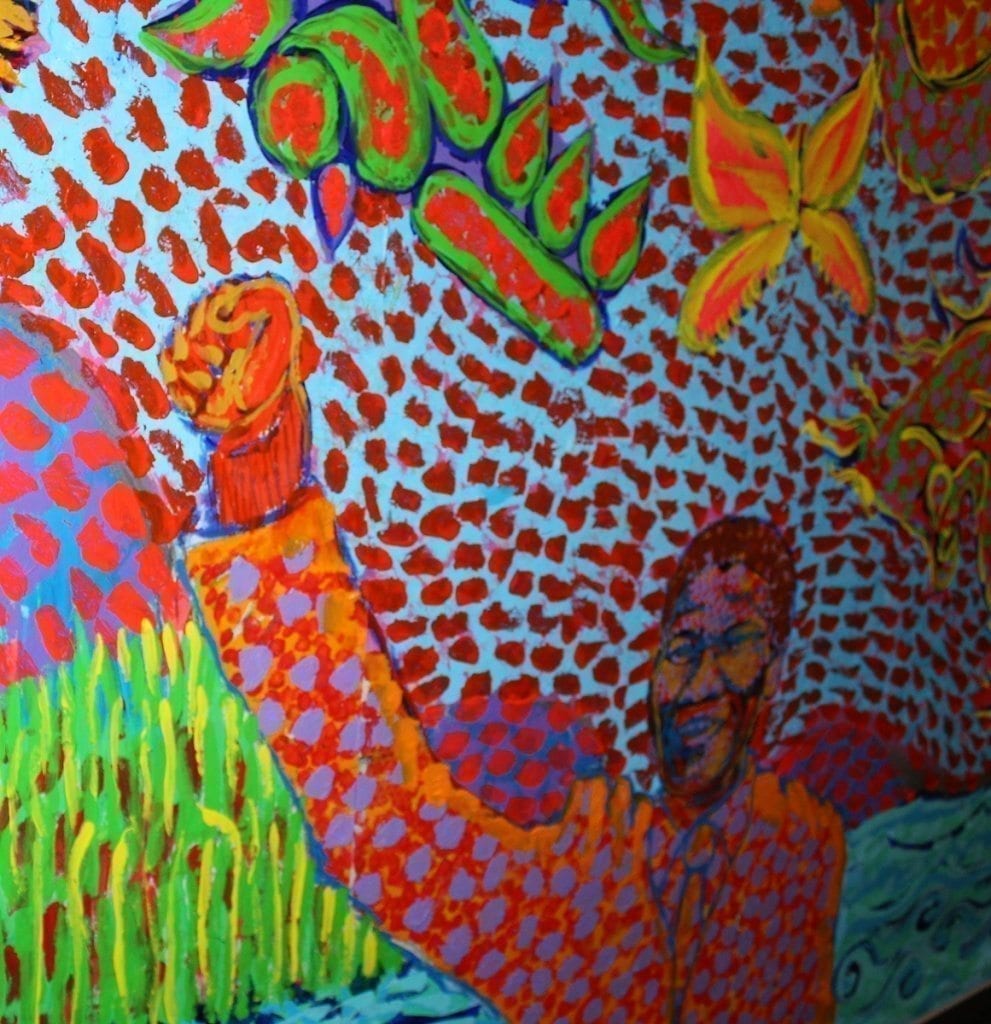
“There has been a fear of coming to school, especially since Trump was elected,” Jaramillo said. “There are students who worry that they or their parents are going to be deported … and we want them to know that we’re here, that we will protect them and that (Fort Vancouver High) is a safe place to be.”
Hearing the students talk so openly about their fears and struggles, the Vancouver officers present at Friday night’s mural unveiling said they were impressed.
“If this is the future of Vancouver,” said Police Chief McElvain, gesturing toward Adame, Avalos and Jaramillo. “Then I think we’re in good hands.”




